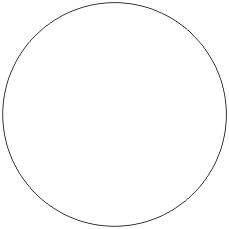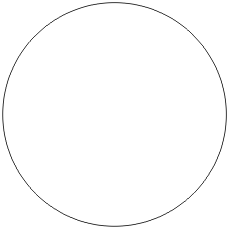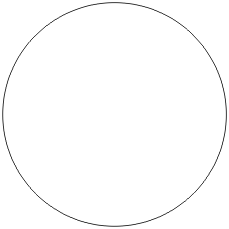My Mitosis Flip Book Made by _______________________________ |
 Interphase |
Prophase
|
 Metaphase |
 Anaphase |
Telophase/Cytokinesis |
The Process of Mitosis
Columbia University - Summer Science Research Program for Science Teachers
Thomas A. Edison Voc/Tech High School
Summer 2006
This lesson is modified from a lesson presented at the NSTA Conference in Anaheim, Ca. April 2006
Course: Living Environment (New York State Curriculum)
Grade: 9th and 10th
Unit: Mitosis
Objective: Students will be able to explain and understand the process of mitosis
Time Required: one 45 minute class.
Materials: 23 sheets of pink copy paper, numbered 1-23*
23 sheets of blue copy paper, numbered 1-23*
46 legal size envelopes
*Count the class student total and divide them into two groups of equal number, representing the pink and blue group, using fewer envelopes if there are not 46 students available.
Do Now Have the students clear the desks from the middle of the room so that the students will have room to move around.
1. The instructor narrates the steps of mitosis. Read only the written information, be careful NOT to add any instructions. Explain that each envelope contains a piece of paper that is pink or blue with a number printed on it. The numbers represent the numbered chromosome and the pink and blue represent that the chromosome was inherited from the mother or father.
Interphase: all chromosomal material and organelles are replicated during S phase
2. Have the students stand up in the cleared area of the room and hand each student an envelope. Explain that they each represent one chromosome.
Prophase: disintegration of nuclear membrane and nucleolus
condensation of chromatin into distinct chromosomes, each consisting of two identical sister chromatids
movement of duplicated centrioles to opposite poles
development of spindle fiber, which lengthen and attach to the chromosomes at the kinetochore and to the opposite centriole (Chromosomes exist as two sister chromatids)
3. They should pretend that they are attached to two spindle fibers which, in turn,are attached to the centrioles which are on opposite sides of the room. The fibers are pulling on them until they all line up in two rows in the center of the room. Do not give the students any instructions in lining up. This will ensure that the order and colors of the “chromosomes” are arbitrary.
Metaphase: Centrioles are now at opposite poles of the cell, with spindle fibers growing outward in astral array. This is the longest phase. Spindle fibers have attached to all chromosome kinetochores at the centromeres.
Centrioles pull on the chromosomes to the center of the cell (metaphase plate)
4. Have the students move to opposite sides of the room. Do not give them any instructions in which direction to move.
.
Anaphase: As the spindle fibers shorten, they pull along one chromosome (with its two sister chromatids) from each pair to a centriole at an opposite pole.
5. Have the students gather together into two groups on either side of the classroom
Telophase: Starting with anaphase, the cell elongates and nuclei reform around each group Cytokinesis of chromosomes. The chromosomes become less dense and return to the appearance of chromatin. Microtubules in an animal cell gather in the middle of the cell, pulling in on the cell membrane, this is called the cleavage furrow.
It draws in the cell, like purse strings, pinching the cell into two separate cells. In plant cells, vesicles gather in the midline of the cell, fusing together to create a center cell plate and two cells. The newly created cells are called daughter cells.
6. Assess the final result:
A. Did the students move equally to opposite sides of the room, or are their numbers unequal. Discuss how this would be a problem in a cell.
B. Have the students open their envelope and show which color paper they have and what number is written on the paper:
- Are the chromosomes separated equally, 1 -23 on each side of the room? Probably not.
- Ask students to find the student who has the same number as they do and see if they are on the same side of the room. Ask them what they think the significance of this would mean to a cell that is undergoing cell division. They should understand that the daughter cells would be missing certain chromosomes (and the genes they possess) and would contain an extra copy of other chromosomes. In both cases, the daughter cells would be unhealthy or nonfunctional.
C. Have the students repeat the demonstration, now knowing the contents of their envelope. This time when the students line up in the middle of the room (metaphase), they should line up next to the student who possesses the paper with the same number that they hold. When the two lines of students separate during anaphase, students from each pair will move to opposite sides of the room.
Homework (photocopy attached pattern)
Have the students each create a flip book of mitosis. Heavy gauge paper works best. They should cut out each square, fill in the appropriate diagram for each mitotic phase (use colored pencils for each structure) and staple the book together along its left edge. On the page to the left of each diagram, they should write out what is occurring at this stage.
New York State Math, Science, and Technology Learning Standards:
Standard 1: Analysis, Inquiry and Design – Students will use mathematical analysis, scientific inquiry, and engineering design, as appropriate, to pose questions, seek answers, and develop solutions
Standard 4: Science – Students will understand and apply scientific concepts, principles, and theories pertaining to the physical setting and living environment and recognize the historical development of ideas in science
- observe and describe cell division at the microscopic level and its macroscopic effects.
My Mitosis Flip Book Made by _______________________________ |
 Interphase |
Prophase
|
 Metaphase |
 Anaphase |
Telophase/Cytokinesis |